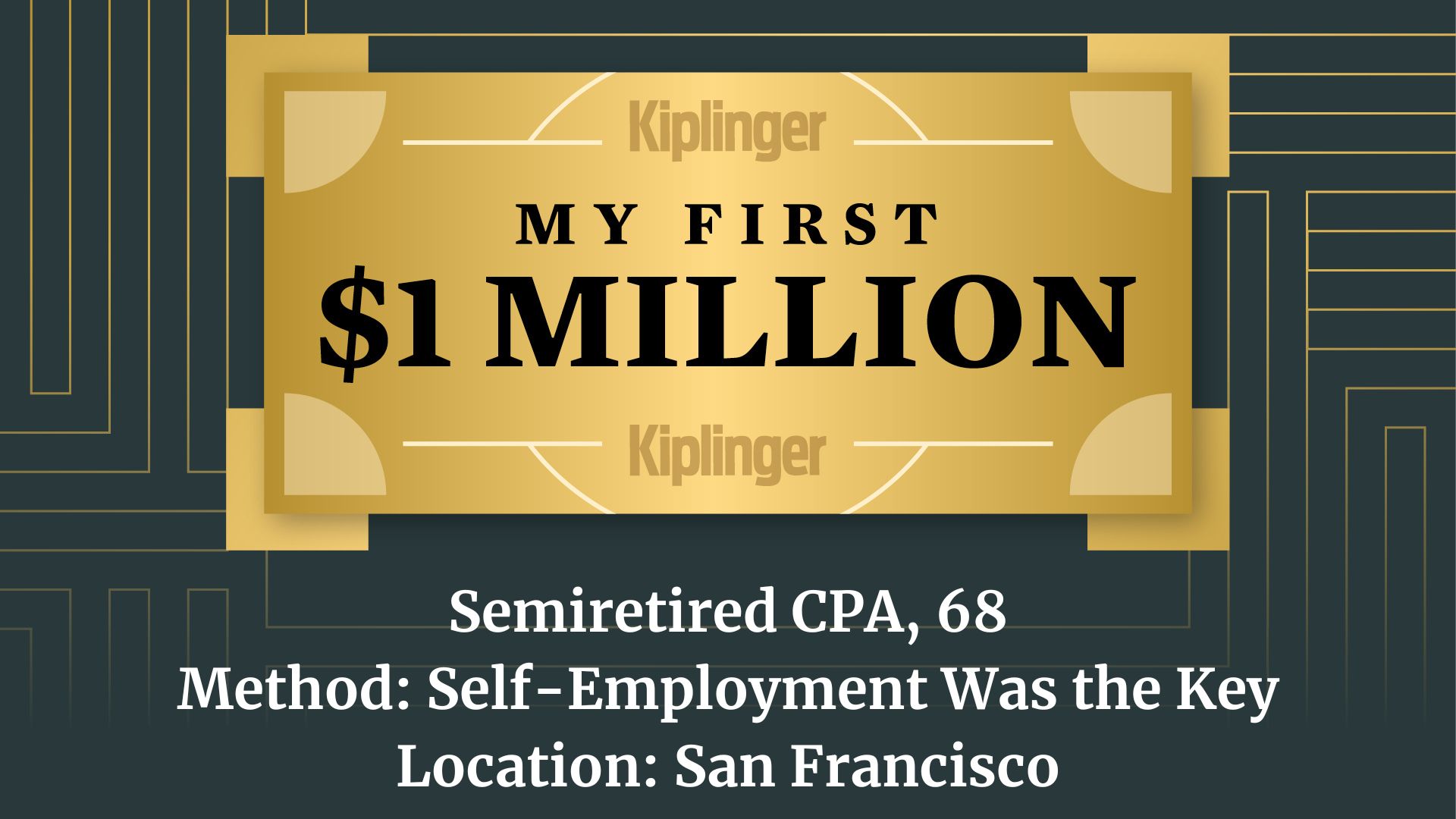Turbulent Days Ahead for Bond Investors
Recalibrate your portfolio to mitigate the heightened risks in the bond market.

Remember the early 1980s, when Pac-Man and MTV were brand new? That era also marked the birth of a bond-market bull run—a three-decade stretch of strong performance that taught a generation of investors to rely on bonds for steady income and portfolio stability.
Fade out the flashy Michael Jackson video. Much darker days are ahead for the bond market, fixed-income experts say, and they'll pose particular challenges for older investors relying on bonds to cover expenses.
Yes, it's "bad," and not in that cool King-of-Pop way. Bond investors are facing rock-bottom yields, the threat of rising interest rates (which mean falling bond prices), longer-term inflation and the ongoing European debt crisis. Professional investors and advisers don't express unmitigated enthusiasm for any segment of the bond market. Low yields on many of the safest bonds virtually guarantee that investors will lose money, after inflation, and yields on more-exotic debt generally aren't high enough to compensate investors for their additional risks.
From just $107.88 $24.99 for Kiplinger Personal Finance
Become a smarter, better informed investor. Subscribe from just $107.88 $24.99, plus get up to 4 Special Issues

Sign up for Kiplinger’s Free Newsletters
Profit and prosper with the best of expert advice on investing, taxes, retirement, personal finance and more - straight to your e-mail.
Profit and prosper with the best of expert advice - straight to your e-mail.
Yet bonds remain a valuable source of income and portfolio diversification—and an essential part of most older investors' portfolios. When U.S. stocks post steep declines, Treasuries and investment-grade corporate bonds tend to notch modest gains, cushioning the blow for balanced portfolios. And investors can tweak their fixed-income portfolios to safeguard against some of the biggest bond-market risks, such as rising interest rates, while accepting some of the smaller risks, such as sluggish returns that won't always keep pace with inflation.
Thanks to the Federal Reserve's unprecedented efforts to strengthen the economic recovery by keeping rates low, bond investors are navigating uncharted territory. The Fed said in early May that it would keep its short-term interest-rate target at 0% to 0.25% and continue buying bonds at a pace of $85 billion a month—an effort aimed at driving down longer-term rates. "This is very unlike any market we've seen before, because the starting level of interest rates is so low," says Mark Egan, lead manager for Scout Funds' fixed-income portfolios. With bond yields offering investors so little cushion against losses, he says, "you don't need to have this idea that inflation will rage or interest rates explode to be very fearful of the bond market."
Indeed, most market watchers expect a gradual increase in interest rates, not a big spike, but even modest moves could trigger losses in bond portfolios.
Although inflation currently looks modest—1.5% for the 12 months ending in March—it's already higher than the yields on many "safe" bonds. And advisers see inflation picking up longer term as the Fed and other nations' central banks seek to jump-start economic growth with easy-money policies.
Advisers also fear that investors, who poured money into bonds in recent years, are unprepared for the bad times ahead—and will rush for the exits at the first sign of trouble. The Fed may signal a gradual withdrawal of its stimulus, "and everyone will interpret that as, 'I gotta get out of here,' " says Hugh Lamle, president of M.D. Sass, a New York investment-management firm. The stampede "can get a little bit panicky."
As the risks pile up, some retirees are avoiding bonds entirely. Gene Dettman, 63, dumped almost all of his bond holdings early last year, largely because of his concern about rising interest rates. Dettman, who retired from the information technology industry eight years ago and lives outside of Abilene, Tex., generally keeps six to 12 months' worth of living expenses in a bank savings account and periodically refills this cash bucket using stock dividends or by taking gains from his stock portfolio. His bond allocation, he says, is just 0.3%, invested in an intermediate-term bond exchange-traded fund. He plans to reevaluate his bond holdings after rates rise, but "they hit me right now as being a losing asset going forward," he says.
While many retirees may share Dettman's dim view of fixed income, dumping bonds completely probably isn't their best course. Here's how to recalibrate your bond portfolio for an era of heightened risk.
Dial Down Risk of Core Holdings
U.S. Treasuries and investment-grade corporate and municipal bonds form the bedrock of many retirees' portfolios. They're also expensive because many investors have stuck to these plain-vanilla holdings even as the Fed's bond purchases helped drive valuations higher. Now, several adjustments are needed to rein in the risk of these core holdings.
One major change: Advisers are reducing allocations to core bond holdings, shifting money into other fixed-income sectors. Litman Gregory Asset Management, for example, has slashed core bond holdings in its most conservative portfolios to roughly 20% of the total bond allocation, down from 70% or 80% several years ago, says Chris Wheaton, managing partner at the Larkspur, Cal., investment-management firm. The firm has shifted some money from core bond holdings to "unconstrained" bond funds that can invest anywhere in the bond market.
Advisers are also lightening up on any longer-term bonds, which are most vulnerable to rising rates. Many aim to keep "duration," a measure of interest-rate sensitivity, under five years—a bit shorter than the Barclays U.S. Aggregate Bond Index, a broad benchmark for core bond holdings. Generally speaking, for each 1% increase in interest rates, a bond's price will fall 1% for every year of duration. Check your bond fund's average duration by typing in the fund's name or ticker symbol at Morningstar.com and clicking the "portfolio" tab.
Despite longer-term concerns about inflation, many advisers are also avoiding Treasury inflation-protected securities. TIPS, whose principal is adjusted to keep pace with inflation, are currently offering negative yields on maturities up to ten years. For protection against inflation, "we'd rather be in commodities and other real assets," says John Workman, chief investment strategist at Convergent Wealth Advisors. Investors already holding TIPS or TIPS funds might consider taking some profits but maintaining a moderate long-term allocation to these bonds—since inflation is likely to be a bigger factor down the road.
Many fund managers say they're still finding value in mortgage-backed securities—both "agency" MBS issued by government-sponsored enterprises, such as Fannie Mae or Freddie Mac, and non-agency MBS issued by banks and other private lenders. Bond funds with a strong track record investing in mortgages include TCW Total Return Bond (TGLMX) and DoubleLine Total Return Bond (DLTNX).
Choosing Core Bond Funds
When choosing plain-vanilla bond funds, remember that many core-fund managers have wandered well outside their traditional boundaries, dipping into riskier high-yield "junk" bonds, emerging-markets debt and other holdings (see Seeking Yield, Bond Funds Ramp Up Risk). Such funds may be a fine option, but you'll want to avoid loading up on those riskier sectors elsewhere in your portfolio. Keep tabs on the funds' quarterly disclosure of portfolio holdings, found on fund companies' Web sites, and check the fund's "portfolio" page on Morningstar.com to compare its credit quality and sector weightings against its peers.
Because fund expenses reduce your returns, insisting on low fees is "the easiest and quickest way to increase your income," says Kent Grealish, partner at investment advisory firm Quacera, in San Bruno, Cal. He likes Vanguard Intermediate-Term Investment-Grade (VFICX), which focuses on high-quality corporate bonds and charges 0.2% annually, versus 0.9% for the average intermediate-term bond fund.
[page break]
In addition to the lofty valuations found among virtually all core bond holdings, municipal bonds pose an additional challenge for investors: the shaky condition of many municipalities' finances. Still, with tax rates for wealthier individuals generally on the rise, muni bonds are going to continue to be good investments for high- or even moderate-income investors, Grealish says. To compare your after-tax yield on taxable bonds against muni bonds, use a tax-equivalent yield calculator such as the one at Bankrate.com.
To keep a lid on volatility and avoid overexposure to financially shaky issuers, look for high-quality, broadly diversified muni-bond funds. Such funds include Fidelity Intermediate Municipal Income (FLTMX) and Vanguard Intermediate-Term Tax-Exempt (VWITX).
Given the threat of rising rates, retirees may be tempted to buy individual bonds instead of bond funds. But this approach poses challenges for small investors. Researching an issuer's credit quality is complex, buying and selling individual bonds involves considerable transaction costs, and most small investors don't have the assets to build the well-diversified portfolios that bond funds typically offer.
But new funds being launched in both the taxable-bond and muni-bond categories may help investors manage the risk of rising interest rates. A "defined maturity" bond fund invests primarily in bonds maturing in a particular year—and when that year rolls around, it will liquidate and return assets to investors.
Investors can use these products to build a bond-fund "ladder," perhaps choosing funds with maturity dates two, four, six and eight years in the future. As each fund matures, the investor can reinvest that money and extend the ladder—minimizing the risk of being stuck in low-yielding bonds as rates rise. Defined-maturity bond funds include the Guggenheim BulletShares Corporate Bond exchange-traded funds, with maturity dates ranging from 2013 through 2020, and Fidelity Municipal Income funds, with maturity dates from 2015 through 2023.
Higher Yield, Higher Risk
High-yield bonds, issued by companies with lower credit ratings, are barely living up to their name these days. The yield on a broad U.S. high-yield bond benchmark touched new record lows below 5% this spring.
Many advisers are reining in junk-bond allocations and leaving high-yield investment decisions in the hands of multi-sector or go-anywhere bond fund managers. One such fund favored by advisers, Loomis Sayles Bond (LSBRX), held about 20% of assets in high-yield bonds at the end of March. The fund has pulled back from the sector a bit but still sees opportunities in certain areas such as health care and technology, says co-manager Elaine Stokes. What's more, "we expect the default rate to stay relatively low" among high-yield issuers, Stokes says.
Investors fearing rate increases have flocked to floating-rate funds, which typically invest in bank loans made to corporate borrowers, often those with lower credit ratings. Rates on these loans "float" in line with changes in a benchmark short-term interest rate, helping to protect investors from the losses typically associated with rising rates.
But these funds can behave more like stocks than bonds. In 2008, for example, when Standard & Poor's 500-stock index dropped 37%, the average bank-loan fund lost 30%, according to Morningstar. Keep floating-rate fund allocations modest, and choose funds that have proven adept at controlling risk, such as Fidelity Floating Rate High Income (FFRHX) or Eaton Vance Floating Rate (EABLX).
Looking abroad, given the European debt crisis, other developed markets seem to offer little comfort to bond investors seeking stability and decent yields. While there are still some opportunities in Europe, particularly among larger corporate issuers, "they're not as prevalent as they have been," says Stokes.
Emerging-market countries, however, "are in better fiscal shape and have better growth prospects" than developed markets, says Convergent's Workman. "You gain much better yields, and you also have the potential tailwind of strengthening currency" versus developed-market currencies, he says. The average emerging-markets bond fund yields 4.1%, according to Morningstar. And unlike U.S. bonds, emerging-markets bonds have strong potential to benefit from interest-rate decreases in those countries, Litman Gregory's Wheaton says.
The potential for emerging currencies to strengthen against the U.S. dollar helps make the case for local-currency emerging-markets bond funds such as Pimco Emerging Local Bond (PLBDX), advisers say. (Many other emerging-markets bond funds invest in dollar-denominated bonds, removing the potential benefits—and risks—of currency fluctuations.)
Such holdings should be limited to roughly 4% or 5% of the total portfolio, Wheaton says, and investors should expect their behavior to more closely mimic stocks than bonds. "In a panic, those emerging-market bonds will get hit pretty hard," he says.
Sifting through these dicey segments of the bond market is a tough job that has become even tougher in a high-risk, low-return world. Investors who would rather leave that work in the hands of professional investors might consider unconstrained bond funds, which can invest in any type of bond and have a lot of flexibility to dial allocations up and down. These funds may also move their average duration into negative territory—allowing them to profit when interest rates rise. In the Pimco Unconstrained Bond Fund (PUBDX), for example, duration can range from negative three years to positive eight years. In the Scout Unconstrained Bond Fund (SUBFX), duration stood at negative 2.7 years at the end of March.
Given the bond-market headwinds, investors must "err toward the side of being cautious," says Scout's Egan. As for his own funds, he says, he'll settle for modest returns while waiting for market conditions to improve, "and hopefully sidestep the damage."
Haven't yet filed for Social Security? Create a personalized strategy to maximize your lifetime income from Social Security. Order Kiplinger's Social Security Solutions today.
Profit and prosper with the best of Kiplinger's advice on investing, taxes, retirement, personal finance and much more. Delivered daily. Enter your email in the box and click Sign Me Up.

-
 10 Cheapest Places to Live in Washington
10 Cheapest Places to Live in WashingtonProperty Tax Is Washington your go-to ski destination? These counties combine no income tax with the lowest property tax bills in the state.
-
 Healthy to 100: Secrets from Countries Where Retirees Age Best
Healthy to 100: Secrets from Countries Where Retirees Age BestLongevity is a team sport, according to author Ken Stern. Here's the secret sauce for living long, healthy lives from countries like Italy and Japan.
-
 My First $1 Million: Semiretired CPA, 68, San Francisco
My First $1 Million: Semiretired CPA, 68, San FranciscoEver wonder how someone who's made a million dollars or more did it? Kiplinger's My First $1 Million series uncovers the answers.
-
 What Fed Rate Cuts Mean For Fixed-Income Investors
What Fed Rate Cuts Mean For Fixed-Income InvestorsThe Fed's rate-cutting campaign has the fixed-income market set for an encore of Q4 2024.
-
 The Most Tax-Friendly States for Investing in 2025 (Hint: There Are Two)
The Most Tax-Friendly States for Investing in 2025 (Hint: There Are Two)State Taxes Living in one of these places could lower your 2025 investment taxes — especially if you invest in real estate.
-
 The Final Countdown for Retirees with Investment Income
The Final Countdown for Retirees with Investment IncomeRetirement Tax Don’t assume Social Security withholding is enough. Some retirement income may require a quarterly estimated tax payment by the September 15 deadline.
-
 Dividends Are in a Rut
Dividends Are in a RutDividends may be going through a rough patch, but income investors should exercise patience.
-
 Municipal Bonds Stand Firm
Municipal Bonds Stand FirmIf you have the cash to invest, municipal bonds are a worthy alternative to CDs or Treasuries – even as they stare down credit-market Armageddon.
-
 Best Banks for High-Net-Worth Clients
Best Banks for High-Net-Worth Clientswealth management These banks welcome customers who keep high balances in deposit and investment accounts, showering them with fee breaks and access to financial-planning services.
-
 High Yields From High-Rate Lenders
High Yields From High-Rate LendersInvestors seeking out high yields can find them in high-rate lenders, non-bank lenders and a few financial REITs.
-
 Time to Consider Foreign Bonds
Time to Consider Foreign BondsIn 2023, foreign bonds deserve a place on the fringes of a total-return-oriented fixed-income portfolio.